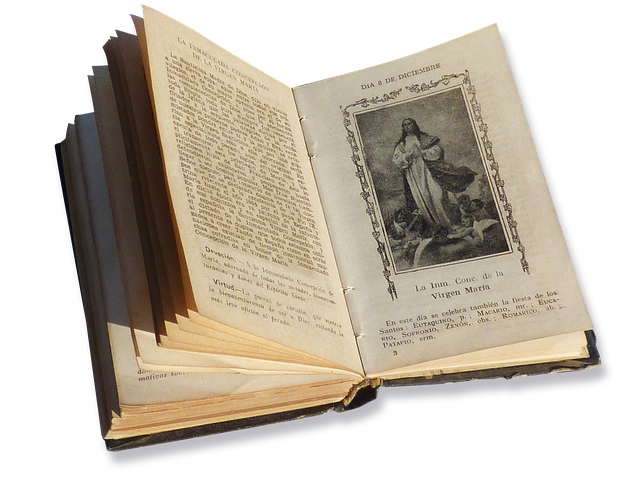A breviary is a liturgical book used in the Catholic Church containing the prayers, hymns, psalms, and readings for the Divine Office, which is the official prayer of the Church that is prayed at various times throughout the day. It is used by clergy, religious, and laypeople who wish to pray the Liturgy of the Hours.
Table of Contents
Brief History of the Breviary in the Catholic Church
Have you ever heard of the term “breviary” in the Catholic Church? If not, you’re not alone! Many people are unfamiliar with this term, but it actually plays a significant role in the daily prayer life of Catholics around the world. In this article, we’ll explore the history of the breviary in the Catholic Church and its importance in the spiritual life of believers.
The breviary, also known as the Liturgy of the Hours, is a collection of prayers, hymns, psalms, and readings that are recited at various times throughout the day by clergy, religious, and laypeople. The origins of the breviary can be traced back to the early Christian Church, where monks and nuns would gather for communal prayer several times a day. Over time, these prayers were organized into a structured format that became known as the breviary.
One of the key figures in the development of the breviary was St. Benedict, a sixth-century monk who is considered the father of Western monasticism. St. Benedict’s Rule, which laid out guidelines for monastic life, included specific instructions for the recitation of the Divine Office, which is another term for the breviary. The breviary continued to evolve over the centuries, with various popes and councils making revisions and additions to the prayers and readings included in the breviary.
In the Middle Ages, the breviary became more standardized, with different versions being used in different regions of Europe. The breviary was seen as a way for the Church to sanctify time and to ensure that the prayers of the faithful were united with the prayers of the Church as a whole. The breviary was also seen as a way to sanctify the day, with prayers being offered at specific times to mark the passage of time and to consecrate each part of the day to God.
Today, the breviary is still used by clergy, religious, and laypeople in the Catholic Church as a way to sanctify time and to unite their prayers with the prayers of the Church. The breviary is divided into different “hours,” with prayers being recited at specific times throughout the day. The breviary includes hymns, psalms, readings from Scripture, and intercessory prayers, all of which are meant to help the faithful grow in their relationship with God and to deepen their spiritual life.
One of the key benefits of using the breviary is that it helps to structure the day around prayer, reminding the faithful to turn their hearts and minds to God throughout the day. By reciting the prayers of the breviary, believers are able to enter into the rhythm of the Church’s prayer life and to join their voices with the countless others who are praying the same prayers around the world.
In conclusion, the breviary is a rich and ancient tradition in the Catholic Church that continues to be a vital part of the spiritual life of believers. By reciting the prayers of the breviary, Catholics are able to sanctify time, unite their prayers with the prayers of the Church, and deepen their relationship with God. Whether you’re a clergy member, a religious, or a layperson, the breviary is a valuable tool for growing in holiness and drawing closer to God.
Importance of the Breviary in Catholic Liturgy
Have you ever heard of the term “Breviary” in the Catholic Church? If not, you’re not alone. Many people are unfamiliar with this important aspect of Catholic liturgy. The Breviary, also known as the Liturgy of the Hours, is a collection of prayers, hymns, and readings that are recited by clergy and religious communities throughout the day. It is a way for Catholics to sanctify the hours of the day and offer praise and worship to God.
The Breviary is divided into different “hours,” or times of prayer, which correspond to different parts of the day. These hours include Matins (or Vigils), Lauds, Prime, Terce, Sext, None, Vespers, and Compline. Each of these hours has its own set of prayers and readings, which are meant to be recited at specific times. For example, Lauds is traditionally prayed in the morning, while Vespers is prayed in the evening.
The Breviary is an important part of the Catholic liturgy because it helps to sanctify time and connect the faithful to the rhythm of the Church’s prayer. By praying the Breviary, Catholics are joining in a tradition that dates back to the early days of the Church. The Breviary is a way for Catholics to participate in the Church’s daily prayer life and unite themselves with the universal Church.
One of the key benefits of praying the Breviary is that it helps to structure the day and provide a sense of rhythm and routine. In a world that is often chaotic and busy, the Breviary offers a way to pause and refocus on what is truly important. By taking time throughout the day to pray the Breviary, Catholics are reminded of the presence of God in their lives and the need to turn to Him in prayer.
Another important aspect of the Breviary is that it helps to form a sense of community among Catholics. When clergy and religious communities pray the Breviary together, they are united in prayer and worship. This sense of unity extends beyond the local community to the universal Church, as Catholics around the world are praying the same prayers at the same time. This sense of unity and solidarity is a powerful reminder of the communion of saints and the universal nature of the Church.
In addition to its spiritual benefits, the Breviary also has a rich theological and scriptural content. The prayers and readings in the Breviary are drawn from the Psalms, the Gospels, and the writings of the Church Fathers. By praying the Breviary, Catholics are immersing themselves in the Word of God and deepening their understanding of the faith. The Breviary is a treasure trove of spiritual wisdom and insight, and it can be a source of inspiration and guidance for Catholics in their daily lives.
In conclusion, the Breviary is an important aspect of Catholic liturgy that helps to sanctify time, unite the faithful in prayer, and deepen their spiritual lives. By praying the Breviary, Catholics are participating in the Church’s daily prayer life and connecting themselves to the universal Church. The Breviary is a rich source of spiritual nourishment and a powerful tool for deepening one’s relationship with God. So, if you haven’t already, why not give the Breviary a try and see how it can enrich your spiritual life?
Structure and Contents of the Breviary

Have you ever heard of a breviary? If you’re not familiar with the term, don’t worry – you’re not alone! Many people outside of the Catholic Church may not be aware of what a breviary is and its significance within the Church. In this article, we’ll explore the structure and contents of the breviary, shedding light on this important aspect of Catholic worship.
The breviary is a book used by clergy and religious in the Catholic Church for the Liturgy of the Hours, also known as the Divine Office. This liturgical prayer is prayed at various times throughout the day and night, with the purpose of sanctifying the day and offering praise and worship to God. The breviary contains a collection of psalms, hymns, readings, and prayers that are recited or chanted by those who pray the Liturgy of the Hours.
The breviary is divided into different sections, each corresponding to a specific time of day. The main hours of the Divine Office are Morning Prayer (Lauds), Midday Prayer (Sext), Evening Prayer (Vespers), and Night Prayer (Compline). In addition to these main hours, there are also shorter hours called the Office of Readings (Matins) and Daytime Prayer (Terce, Sext, and None). Each of these hours has its own unique structure and content, with psalms, readings, and prayers that reflect the themes of the liturgical season or feast day.
One of the key components of the breviary is the Psalter, which is a collection of 150 psalms that are prayed throughout the week. The psalms are divided into different sections, with a set number of psalms assigned to each day. By praying the psalms, those who use the breviary enter into the rich tradition of Jewish and Christian prayer, joining their voices with the psalmists in praise and supplication.
In addition to the psalms, the breviary also contains readings from Scripture, the writings of the Church Fathers, and other spiritual texts. These readings help to deepen the prayer of the Divine Office, providing nourishment for the soul and guidance for the spiritual life. The breviary also includes prayers for the needs of the Church and the world, as well as intercessions for the faithful and all those in need.
The structure of the breviary is designed to guide those who pray it through a rhythm of prayer and reflection that is both regular and varied. By following the daily cycle of the Divine Office, those who use the breviary enter into a pattern of prayer that shapes their day and orients them towards God. The breviary serves as a reminder of the importance of prayer in the life of the Church and the individual believer, helping to sanctify time and draw hearts closer to the Lord.
In conclusion, the breviary is a valuable resource for those in the Catholic Church who seek to deepen their prayer life and grow in holiness. Its structure and contents provide a framework for the Liturgy of the Hours, guiding believers through a daily rhythm of prayer and reflection. By praying the psalms, reading Scripture, and lifting up prayers for the Church and the world, those who use the breviary participate in the Church’s mission of worship and intercession. So, if you ever come across a breviary, now you’ll know a little more about what it is and why it’s so important in the life of the Church.
How to Use the Breviary for Daily Prayer
Have you ever heard of the term “Breviary” in the Catholic Church? If you’re not familiar with it, don’t worry – you’re not alone! The Breviary is a book used by priests, deacons, and religious individuals to pray the Liturgy of the Hours, also known as the Divine Office. This ancient practice of praying at specific times throughout the day has been a tradition in the Catholic Church for centuries.
The Breviary contains a collection of prayers, psalms, hymns, and readings that are recited or chanted at different times of the day. It is divided into different sections, or “hours,” which correspond to specific times of the day: morning, midday, evening, and night. Each hour has its own set of prayers and readings, which are meant to sanctify and consecrate the day to God.
Using the Breviary for daily prayer can be a powerful way to deepen your relationship with God and stay connected to the Church’s liturgical tradition. It can also help you to cultivate a sense of mindfulness and spiritual discipline in your daily life. By setting aside time each day to pray the Liturgy of the Hours, you can create a sacred space for reflection, meditation, and communion with God.
One of the great things about the Breviary is that it is accessible to anyone who wants to use it for prayer. You don’t have to be a priest or religious to pray the Liturgy of the Hours – anyone can do it! All you need is a Breviary book or a digital app that contains the prayers and readings for each hour of the day.
If you’re new to using the Breviary for daily prayer, don’t worry – it may seem a bit overwhelming at first, but with practice, you’ll get the hang of it. One helpful tip is to start small and gradually work your way up to praying more hours throughout the day. You can begin by praying just one or two hours a day, such as morning and evening prayer, and then add more hours as you become more comfortable with the practice.
Another tip is to set aside a specific time each day to pray the Liturgy of the Hours. This can help you to establish a routine and make it a regular part of your daily life. Whether you prefer to pray in the morning, during your lunch break, in the evening, or before bed, find a time that works best for you and stick to it.
As you begin to pray the Liturgy of the Hours regularly, you may find that it becomes a source of comfort, strength, and inspiration in your life. The prayers, psalms, and readings in the Breviary can help you to connect with God on a deeper level and draw closer to Him in prayer. It can also be a way to unite your prayers with the prayers of the Church and the entire Body of Christ around the world.
In conclusion, the Breviary is a valuable resource for daily prayer in the Catholic Church. By using it to pray the Liturgy of the Hours, you can deepen your relationship with God, cultivate a sense of mindfulness and spiritual discipline, and connect with the Church’s liturgical tradition. So why not give it a try and see how it can enrich your prayer life?
Variations of the Breviary in Different Catholic Orders
The Breviary is a key component of the liturgical prayer life in the Catholic Church. It is a collection of prayers, hymns, psalms, and readings that are recited or sung at various times throughout the day by clergy, religious, and laypeople. The Breviary is also known as the Liturgy of the Hours, as it is divided into different “hours” or times of prayer that are meant to sanctify the day and bring the faithful closer to God.
While the Breviary is a common practice in the Catholic Church, there are variations in how it is used and structured among different religious orders. Each order has its own unique way of praying the Breviary, reflecting the particular charism and spirituality of that order.
One of the most well-known variations of the Breviary is the Roman Breviary, which is used by clergy and religious in the Latin Rite of the Catholic Church. The Roman Breviary is divided into different “hours” of prayer, including Matins (or Vigils), Lauds, Prime, Terce, Sext, None, Vespers, and Compline. Each of these hours has its own set of prayers, psalms, and readings that are meant to be prayed at specific times throughout the day.
In addition to the Roman Breviary, there are also variations of the Breviary used by different religious orders within the Catholic Church. For example, the Benedictine Breviary is used by members of the Benedictine Order, who follow the Rule of St. Benedict. The Benedictine Breviary is similar to the Roman Breviary but includes some variations in the structure and content of the prayers.
Another variation of the Breviary is the Franciscan Breviary, which is used by members of the Franciscan Order founded by St. Francis of Assisi. The Franciscan Breviary reflects the simplicity and poverty of the Franciscan spirituality, with a focus on humility, poverty, and service to others.
The Dominican Breviary is used by members of the Dominican Order founded by St. Dominic. The Dominican Breviary includes a strong emphasis on study and preaching, reflecting the Dominican charism of preaching the Gospel and defending the faith.
Each of these variations of the Breviary reflects the unique charism and spirituality of the religious order that uses it. While the basic structure of the Breviary remains the same across different orders, each order has its own traditions, prayers, and readings that are specific to their particular way of life and mission in the Church.
Overall, the Breviary is a rich and ancient tradition in the Catholic Church that has been passed down through the centuries. While there are variations in how it is used among different religious orders, the essence of the Breviary remains the same – to sanctify the day, unite the faithful in prayer, and bring them closer to God. Whether one is praying the Roman Breviary, the Benedictine Breviary, the Franciscan Breviary, or the Dominican Breviary, the goal is the same – to lift up one’s heart and mind to God in prayer and praise.
Conclusion
A breviary in the Catholic Church is a liturgical book containing the prayers, hymns, psalms, and readings for the Divine Office, which is the official prayer of the Church that is prayed at various times throughout the day. It is used by clergy, religious, and laypeople to participate in the Church’s daily prayer life.


